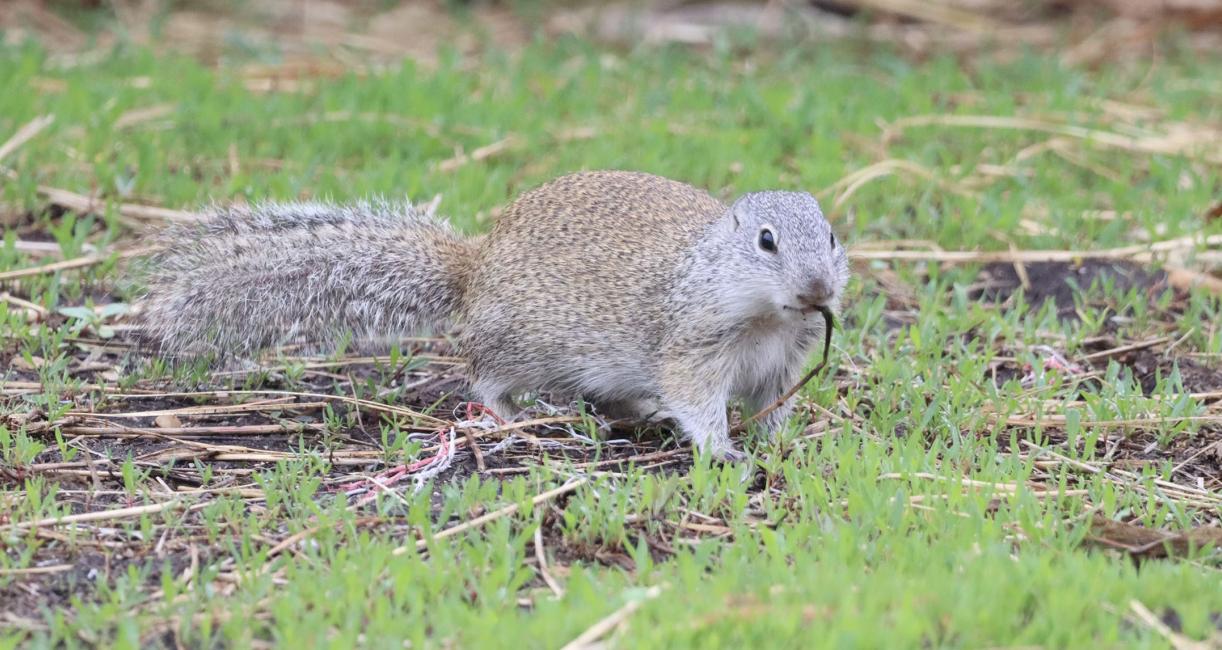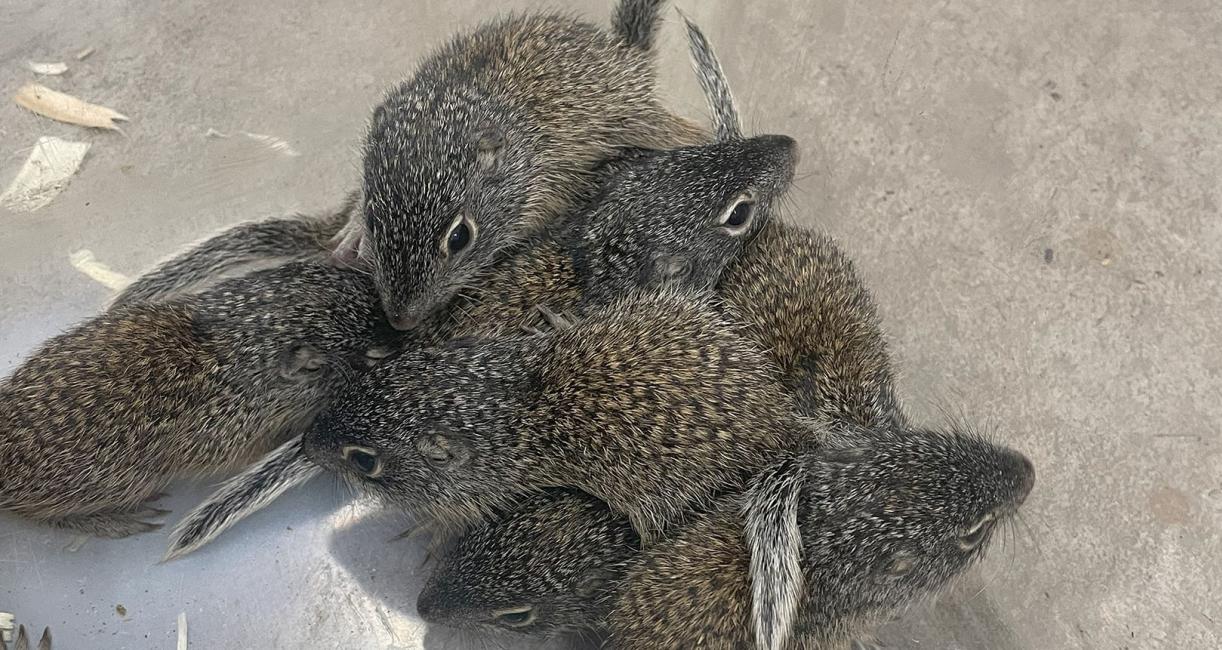




Franklin's ground squirrel

Litter of Franklin's ground squirrel kits
Franklin's ground squirrel kit

Justin Moore, graduate research assistant, with a Franklin's ground squirrel.



Endangered squirrels find new guardians
By Blake Sebring
October 22, 2024
As a Purdue University Fort Wayne assistant professor of biology, Scott Bergeson loves sharing his environmental philosophy with his students.
“Any endangered species, if we as humans have done something to cause them to decline, then we have a responsibility to help them be restored,” Bergeson often says. “If we can help, we should help.”
A current project Bergeson and graduate research assistant Justin Moore are working on with the Indiana Department of Natural Resources and The Nature Conservancy is helping an endangered variety of squirrels find a new future. With support from local wildlife officials, Moore snagged 25 Franklin’s ground squirrels from South Dakota in May to repopulate the Efroymson Prairie at Kankakee Sands. The area contains 8,400 acres of prairie and wetlands in northwest Indiana’s Newton County on the Illinois border.
Bergeson came to PFW in 2017 and has worked frequently with the Indiana DNR. He submitted a grant proposal for the project that was accepted in January and will run for two years. Moore recently started as Bergeson’s graduate research assistant.
Because of the destruction of prairies and loss of habitat caused by climate change, agriculture, and development, Franklin’s ground squirrels have been endangered in the state since 1993, and the Indiana DNR estimates there are fewer than 200 remaining. The hope is the transported squirrels will reinvigorate the declining population in the nature preserve, with another batch from South Dakota scheduled to be added next summer.
Working with the DNR allows Bergeson’s graduate research assistants like Moore and Lauren Lee to get out into the field and gain practical experience. Some undergraduate students will also participate next summer.
“We can expose our students to that field and show them what kind of jobs are out there and how we can all collaborate to do something bigger,” Bergeson said. “It’s great to take the stuff that we lecture about and then apply it in the real world. This is a fully rounded education.”
South Dakota was selected because it has a more robust and healthy selection of the squirrels, Moore said. He has applied tracking collars that collect movement, habitat selection, and survival data from the squirrels, producing solid initial numbers. Females produce litters of about 10 pups each year. Eventually, another goal when the Franklin’s ground squirrels are established will be to bring some to other parts of the state.
Bergeson said diminishing populations and habitats often produce many problems for the species.
“If they are fragmented, they are really far apart and you can’t get one squirrel traveling very far to spread their genes,” Bergeson said. “Without that, this population only mates with individuals from within the population, and that population gets smaller, interbreeding can occur, and that leads to what I call the vortex of doom.
“By providing more populations throughout Indiana, and trying to add some habitat corridors between them they can walk through, we essentially make sure that the entire population can mate with any other population in the state so they can stay around.”




